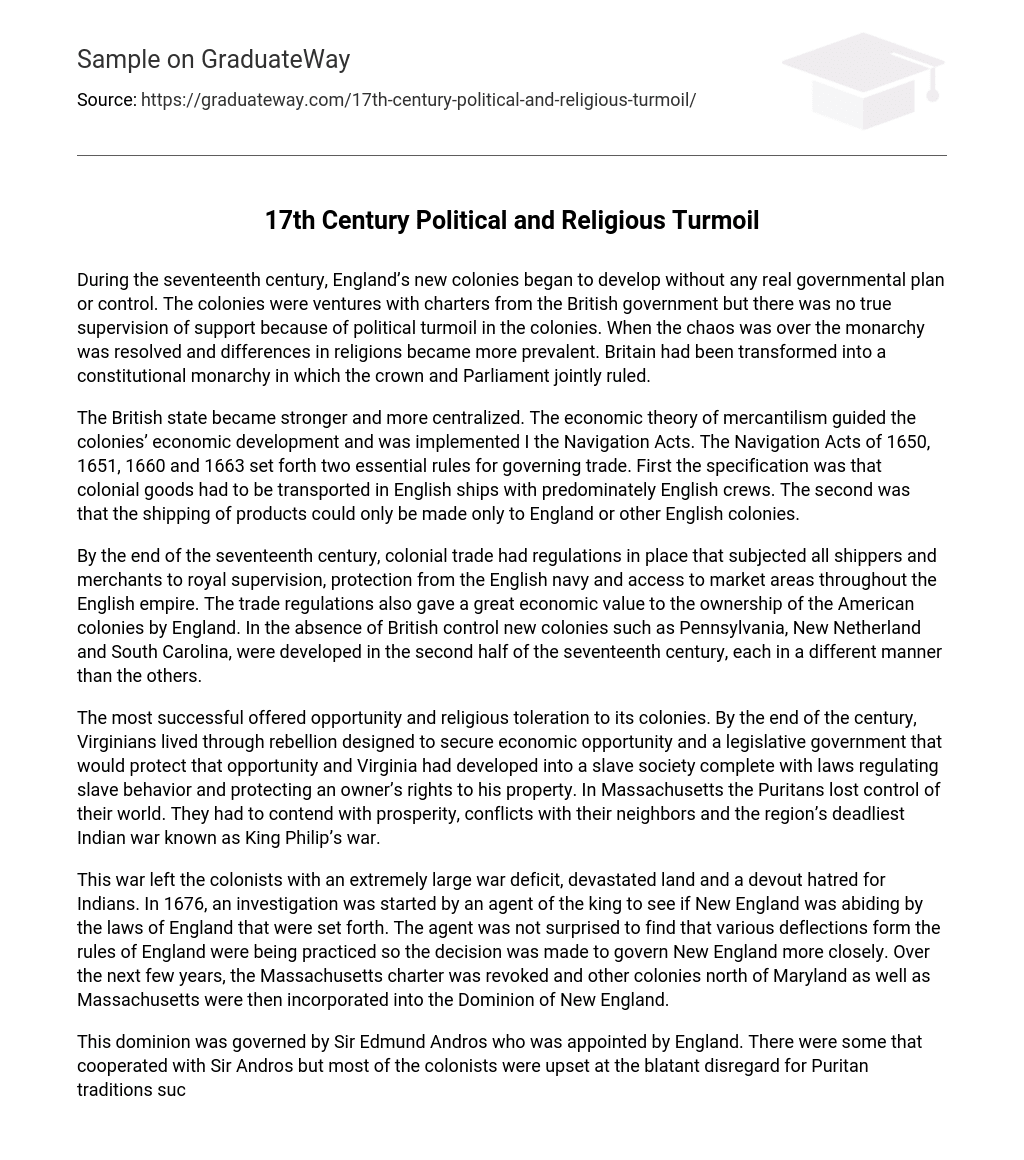In the 17th century, England’s colonies in America experienced uncontrolled growth without a well-defined government plan. Despite having charters from the British government, political unrest led to inadequate supervision and support. Once stability was restored and the monarchy reinstated, religious differences became more noticeable. As a result, Britain transformed into a constitutional monarchy where both the crown and Parliament shared ruling power.
During this period, the British state experienced growth in both strength and centralization. The economic development of the colonies followed the principles of mercantilism, which were enforced through a set of laws known as the Navigation Acts. These acts, passed in 1650, 1651, 1660, and 1663, introduced two significant trade regulations. The first regulation required colonial goods to be transported exclusively on English ships with predominantly English crews. The second regulation limited the shipping of products solely to England or other English colonies.
During the late 17th century, regulations were put in place to regulate colonial trade. These regulations aimed to provide royal supervision and protection from the English navy for the American colonies. They also sought to ensure access to market areas within the English empire, thus increasing England’s economic value of owning these colonies. Despite this control, new colonies such as Pennsylvania, New Netherland, and South Carolina developed in their own distinctive ways during the second half of the 17th century.
The most successful opportunity offered religious toleration and economic opportunity to its colonies. By the end of the century, Virginians experienced a rebellion aimed at securing economic opportunity and a legislative government that would safeguard that opportunity. Virginia evolved into a slave society, with laws governing slave conduct and protecting an owner’s property rights. In Massachusetts, the Puritans no longer had control over their society. They had to confront prosperity, conflicts with their neighbors, and the deadliest Indian war in the region, known as King Philip’s War.
This war had several negative consequences for the colonists, including a massive war deficit, extensive land destruction, and a strong animosity towards the Native Americans. In 1676, an investigation was initiated by a representative of the king to assess the compliance of New England with English laws. With little surprise, the agent discovered multiple deviations from these regulations, leading to a decision to tighten control over New England. Consequently, the Massachusetts charter was revoked and the Dominion of New England was established, encompassing not only Massachusetts but also other colonies situated north of Maryland.
Sir Edmund Andros, appointed by England, governed this dominion. While some cooperated with him, many colonists were outraged by his blatant disregard for Puritan traditions. The revocation of the charter directly challenged the distinctiveness of Puritan government, as it violated their practices such as observing the Sabbath. The northern colonies significantly diverged from the southern colonies in their development. In New England, the Puritans established societies and governments centered around their religion and churches, prioritizing worshiping God over the profitable tobacco industry.
Despite conflicts between changes in laws and regulations and religion, it was primarily the political developments that caused most of the difficulties endured by the colonists. The relentless pursuit of power, control, and wealth resulted in the imprisonment, overthrow, and even execution of some leaders. Nevertheless, despite these challenges, the colonies persevered and ultimately transformed into the states and cities we recognize today.





